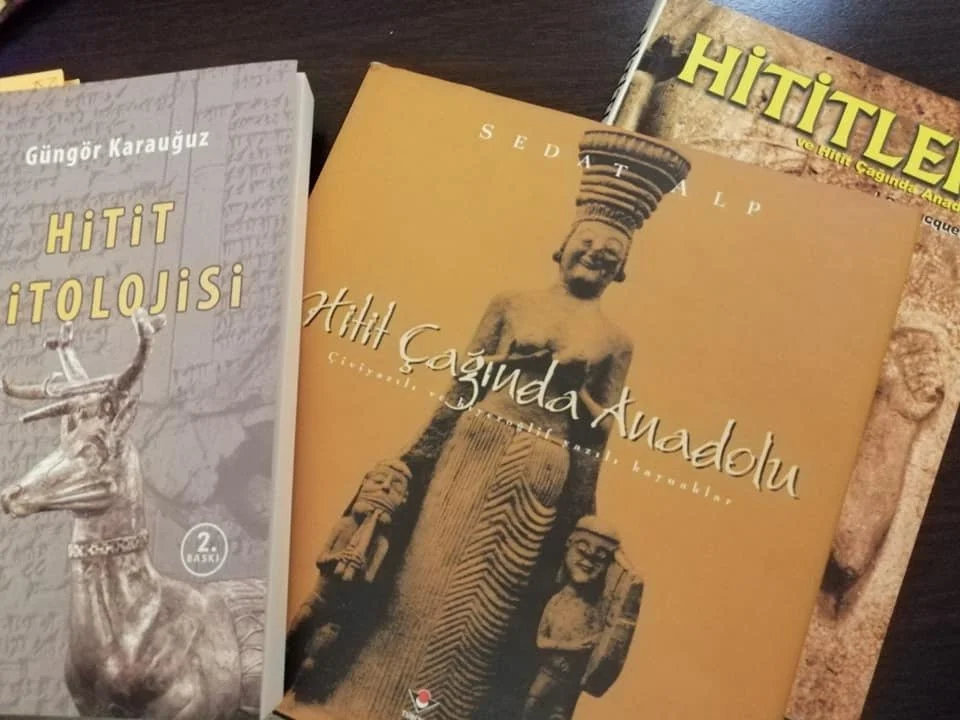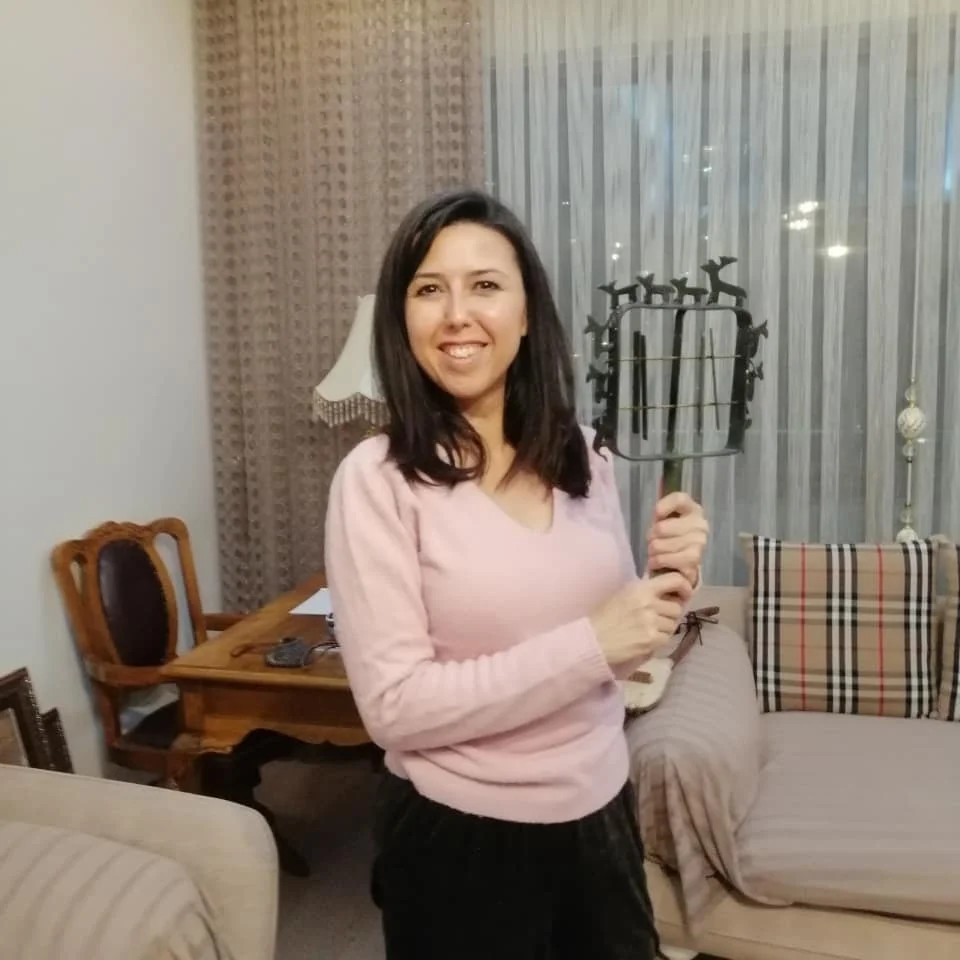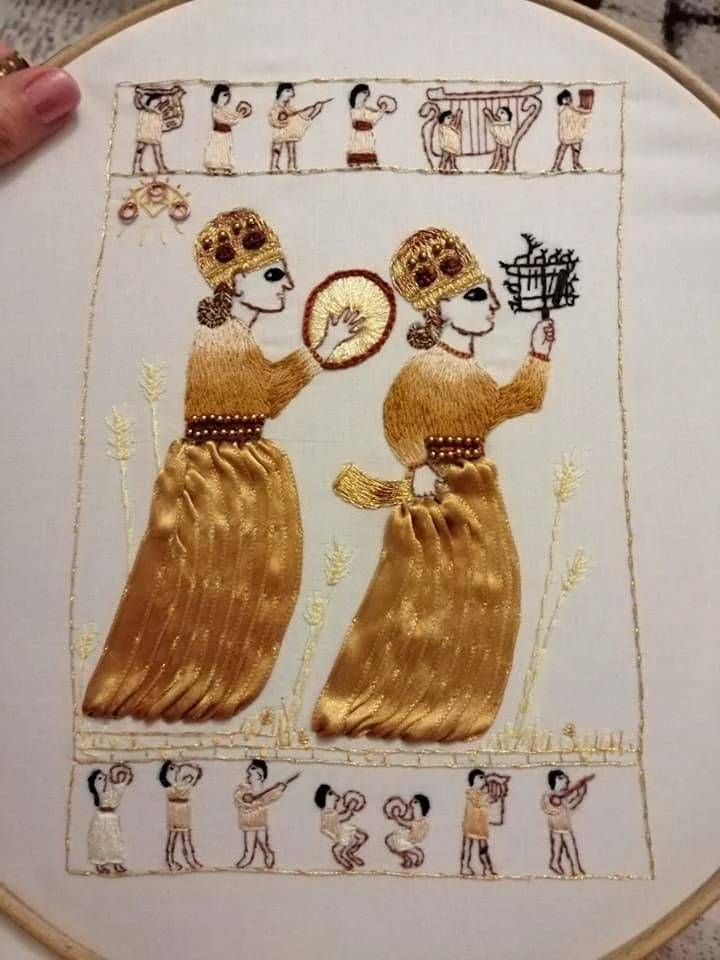How does an embroidery journey begin and unfold?
Let me give an example through my embroidery of Ninatta and Kulitta from Hittite mythology.
First, I gather historical and ethnographic information related to the theme I have in mind.
I study mythological historical texts as well as reliefs, sarcophagi, vases, and other archaeological or ethnographic artifacts. Whenever possible, I view the artifacts in their original locations.
Ninatta and Kulitta in the Reliefs of Yazılıkaya
The İnandık Vase (Museum of Anatolian Civilizations, Ankara)
The Hüseyindede Vase (Çorum Archaeological Museum)
Using all the sources and my imagination, I create a drawing. If I’m satisfied with the drawing, I transfer it onto a fabric suitable for embroidery. I decide on the appropriate type and color of thread. Then, I determine which embroidery techniques are most suitable for the project.
While working on the embroidery, I reflect on the instruments depicted in the piece. Sometimes, they are already part of my collection; other times, I manage to find an authentic replica. If the instrument is no longer produced today—like the Hittite sistrum—I commission skilled luthiers to craft a reproduction based on my drawings.
"Long imprisoned in stone reliefs, painted codices, or ceramic vases, these ancient figures and their instruments are reborn into today’s world—through a medium they never imagined: embroidery. 😊"
Contact
Planning an exhibition, lecture, or research partnership?
Prof. Feyzan Goher is open to proposals from galleries, museums, festivals, and universities.
Tell us a little about your project and we’ll respond within two business days.











